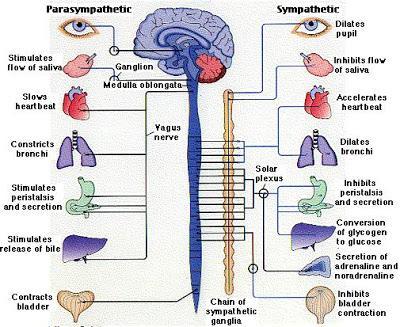 Have you ever noticed that a segment of our population consists of people whose body, brain, and mind are more stable and robust under all kinds of situations? These folks are not perturbed by opulence or adversity, and can maintain their equanimity during excitement, enthusiasm, and eagerness or dull, tragic, and dispassionate moments. These individuals tend to be healthier and more resilient, and are classified as people with “high vagal tone.” Such people are more resilient under stress, and can easily shift from an excited state to a relaxed state and vice versa without getting unduly perturbed. These individuals not only easily wade through stressful situations, but they tend to have good resistance power and are healthier.
Have you ever noticed that a segment of our population consists of people whose body, brain, and mind are more stable and robust under all kinds of situations? These folks are not perturbed by opulence or adversity, and can maintain their equanimity during excitement, enthusiasm, and eagerness or dull, tragic, and dispassionate moments. These individuals tend to be healthier and more resilient, and are classified as people with “high vagal tone.” Such people are more resilient under stress, and can easily shift from an excited state to a relaxed state and vice versa without getting unduly perturbed. These individuals not only easily wade through stressful situations, but they tend to have good resistance power and are healthier. In contrast, people with low vagal tone are more sensitive to stress and can easily fall prey to disease. They tend to have challenges such as weak digestion, fluctuating heart rate, and difficulty managing emotions. Furthermore, people with low vagal tone are easily perturbed, have weak digestion, and frequently suffer from physical, mental, and emotional disturbances. Low vagal tone is correlated with such health conditions as depression, anxiety, chronic stress, and pain. In summary, a higher vagal tone is linked to physical and psychological wellbeing. A low vagal tone index is linked to inflammation, negative moods, loneliness, and heart attacks. So what exactly is vagal tone? Vagal tone defines the functional status of the vagus nerve and is the degree of activity within the parasympathetic nervous system. The vagus nerve, which is the 10th cranial nerve and the largest of the cranial nerves, relays information between the brain and other internal organs. It starts at the base of the skull and innervates the respiratory and digestive systems thereby connecting these areas with the nervous system. From the base of the brain, the vagus nerve extends all the way down to the neck, chest, and abdomen, and provides information about the state of the body's organs to the central nervous system. Thus, the vagus nerve is responsible for a myriad of tasks, including heart rate, breathing, respiration, and digestion, peristalsis of gut, small intestine and colon, sweating, muscle movements in the mouth, speech, and hearing. It’s no wonder that optimal physiological functioning is a direct reflection of the functional status of the vagus nerve. Better prognosis is predicted by optimal vagal tone especially in people who are recovering from chronic diseases. Furthermore, the immune strength and resilience of an individual directly depends on the activity of the vagal nerve. The vagus nerve constantly sends sensory information about the state of the lower body organs to the brain. Gut feelings and instincts are emotional perceptions transferred to the brain through the vagus nerve. Thus, when we use the phrase “gut feeling,” we are unconsciously referring to “the status of the vagus nerve.” How does all this relate to yoga? Several research studies suggest that yogic practices such as pranayama, or breathing techniques, can significantly increase vagal tone and improve symptoms of a variety of conditions, including diabetes, chronic pain, anxiety, and depression. In a paper Effects of Yoga on the Autonomic Nervous System, Gamma-aminobutyric-acid, and Allostasis in Epilepsy, Depression, and Post-Traumatic Stress Disorder, a group of researchers hypothesized what may be the underlying physiological mechanism(s) by which yoga impacts the vagal tone and thus the body and brain. After gathering evidence from previously published literature and analyzing all the data, this group hypothesized that yoga helps regulate the nervous system by modulating the vagal tone thereby reducing the “allostatic load” (allostatic load is the cumulative wear and tear on the body or the total stress that we accumulate over time).The authors believe that uncontrolled chronic stress:
- Creates an imbalance of the autonomic nervous system (ANS) by decreasing the activity of the parasympathetic nervous system (PNS controls body process during normal situations, and is sometimes called the Rest and Digest response) and increasing the activity of the sympathetic nervous system (SNS prepares the body to deal with stressful situations and is also referred to as Fight or Flight response). See Understanding Your Autonomic Nervous System for information.
- Lowers the activity of gamma amino-butyric acid (GABA) system, the primary inhibitory neurotransmitter system (GABA plays a central role in suppressing excess neural activity throughout the nervous system). See Anxiety, Yoga, and Brain Chemistry for information.
- Elevates the allostatic load.

